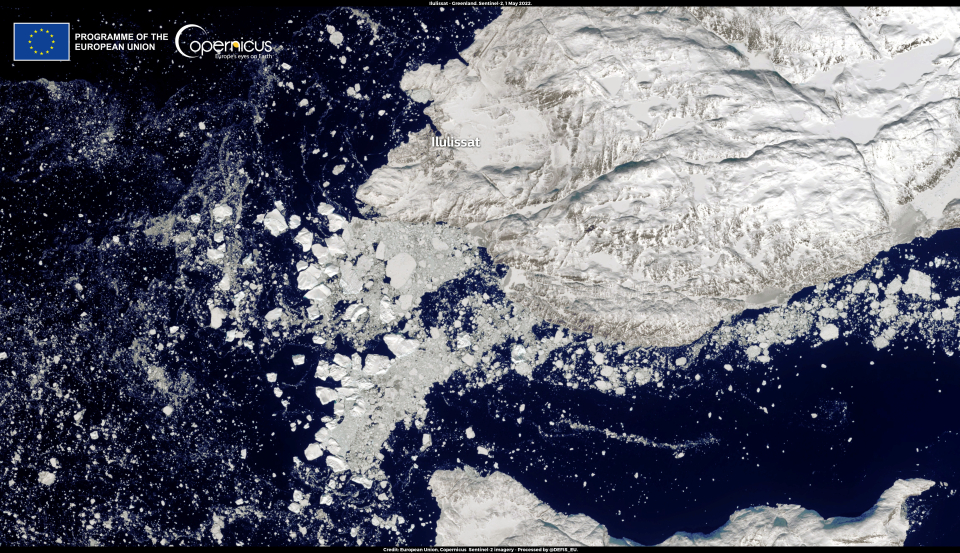Publié le 5 mai 2022
According to a study recently published in the Nature scientific journal, plastic pollution is becoming pervasive in the Arctic, even reaching remote areas with no human settlements. Globally, plastic debris and microplastics have infiltrated terrestrial and marine ecosystems, the cryosphere and the atmosphere. In the Arctic, the study argues that the plastic pollution levels detected are partly generated by local human activities (such as fisheries), but distant regions are found to be a significant source of pollution as plastic is carried by ocean currents.
The data analysed in the study were sourced from different Arctic ecosystems. One of the extraction points is the Ilulissat Icefjord, visible in this image acquired by one of the Copernicus Sentinel-2 satellites on 2 May 2022. It is located on the west coast of Greenland, 250 km north of the Arctic Circle, and is one of the most active glaciers in the world. For its outstanding and universal value, it was designated a UNESCO World Heritage site in 2004.
Remote regions, such as the Arctic, are very fragile. The Copernicus satellite data allow researchers to study and monitor their environmental condition, as well as assess the effects of pollution and climate change on them.
